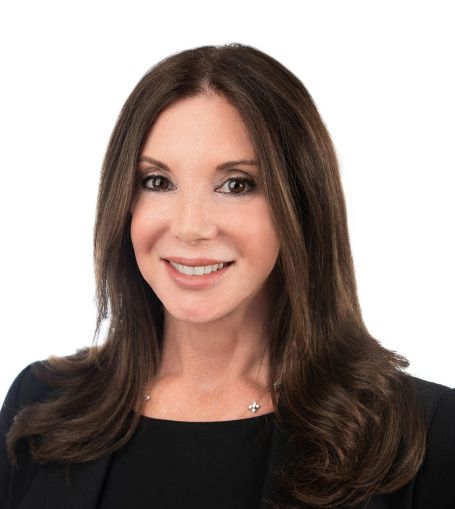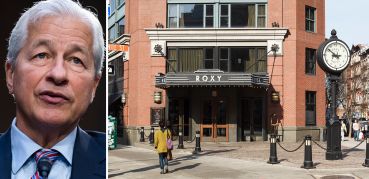Bayport’s Marcia Kaufman On the Lending Dynamics in D.C. and Florida
The New York-based lender provides mostly short-term loans for housing developments designed to scale up
By Chava Gourarie November 24, 2023 9:00 am
reprints
Bayport Funding is a balance sheet lender that primarily provides short-term loans for single-family or multifamily flips, or other value-add projects. The New York-based company is over three decades old, and is led by CEO Marcia Kaufman, who came to the company in 2018 with decades of experience in the real estate industry. Kaufman spent the first 25 years of her career in mortgage lending, up until the Great Recession, then branched out independently after the worst of it.
While many lenders have been sitting this cycle out, Bayport has been very active, closing a $200 million credit facility with Webster Bank earlier this year, with more funding in the pipeline. The firm has also been expanding into new markets, most recently into Dallas and Washington, D.C., as well as expanding their Florida footprint to encompass the whole state.
Kaufman spoke with Commercial Observer in late October about Bayport’s successful recipe, what she’s seeing in the fix-and-flip space, and how she makes her move into new regions.
This interview has been edited for length and clarity.
Commercial Observer: You’re a tri-state area company that’s most recently expanded into Dallas and D.C. What do you look for when you move into a new area?
Marcia Kaufman: We started our business in the tri-state area, and we decided to move up from Boston down to Florida in a very methodical way. We chose the East Coast initially because the real estate assets are very similar, and the borrowers have a lot of commonality. So it was a very natural migration for us to expand our business to those areas. Many sponsors that we started to do business with also moved out of New York and started going either south or north. And we like to follow a good sponsor, an experienced pathway out into new markets that they go to. Of course, we do our due diligence when entering a new market.
Florida was a very easy migration for us. I have a lot of people in New York and New Jersey that make the move down to Florida. The real estate laws are actually a little more friendly for landlords and owners in Florida. So that’s a nice plus. And the D.C. metro area really emulates more of the legalities that the New York metropolitan market has. So it was a familiar area for us to move into naturally.
What’s the range of the size of the loans that you’re providing?
We’ll go as low as $150,000 and a max of $6 million. The reason our range goes from one extreme to another is if we’re supporting a real estate developer who’s coming in to buy a one- to four-family fix and flip, many times they’ll buy in the low couple $100,000s. They then might need some rehab money — that we lend them as well — to renovate those properties, and then they’ll sell based on the market value.
Those real estate investors, as they get more seasoned and more experienced, they’ll normally scale up their business and move into the multifamily sector, and their loan balances go up as well. So we really work with these real estate developers while they’re learning their trade. We’re there to support them from a lender’s perspective to help them expand their business.
You moved into D.C. in the second quarter of this year. What does that expansion look like?
We have a number of people that work remotely from there. We’re working with mortgage brokers down there that have a book of business and that are happy to have a balance sheet lender come into the area. A lot of lenders have had pencils down, a lot of lenders have left the space due to liquidity issues, because loan buyers are not really out there heavily buying loans. They were very welcoming to Bayport because we are a balance sheet lender, we do our own loans, we put them on our books, we service the loan, and we do all the construction draws directly from the company.
Also, for the small lenders that were local to the area, they might have had liquidity issues because there weren’t a lot of places to sell loans. What we do for those lenders, if they can originate those loans, we’ll allow them to close it in their name, and use our money. And we’ll assign it to Bayport at closing through our loan lender division. It’s a white-label funding division. That’s been a big asset in increasing our load as we expand.
Where do you get your funding? And how are you able to have the liquidity to operate in this market?
We’re very fortunate that we have a lot of equity in the company. The partners chose to keep a lot of their equity, they didn’t strip the company dry; they’ve always reinvested in the company. We have two funds, 506(c)s. And because we’ve been around for such a long time, for this industry, and we’re very seasoned professionals, we were able when the market was turning and a lot of warehouse lenders stopped lending to increase our warehouse line — one of our credit facilities — up to $200 million. We’re actually in the process of taking on additional credit facilities. You can only do so if you have net worth.
I attribute our success to the experience of our team here. We know when to pivot to asset management, our book performs very well. We’re not here to, you know, do every loan — we’re here to do every loan that makes sense.
I’m not sure if you recall, but probably in the last five years you had a lot of Wall Street firms that came in very heavily, and they were buying the market, and they would have a ton of these residential transitional loans, and they would do a lot just to beef up volume because on Wall Street volume is what matters. But then the quality of the credit gets jeopardized. We didn’t race to the bottom, we didn’t jeopardize our credit. And, because of the performance of our book, we’ve been able not only to grow our funds — between that and the equity — we’ve also been able to grow our credit and warehouse facilities.
In South Florida, what are the factors you’re paying attention to when underwriting these loans? And what’s changed in the last year or two? Insurance rates have gone up and rents have grown immensely, but there’s obviously a cap to that.
Insurance costs in Florida have doubled and tripled. The rents have been increasing tremendously, but we kind of feel that there could be a little softening in the market. We also pay attention to management costs, maintenance costs. Labor costs have increased. Therefore, it costs more money to manage the property than it did before. Hard costs cost more money.
Across all of our portfolio, about a year and a half ago, we started adding stresses to our underwriting. When the Fed started its campaign of raising rates, along with the increase in insurance rates and adding a little more capex to some of these projections, we started adding 200 basis points to pricing based on the agency pricing from Fannie and Freddie back then. I got a lot of pushback internally; they thought I was being too conservative. It ended up that it was the right move to make. Today, we don’t add 200 basis points. We’re maybe adding 50 because we think the Fed may have a couple more moves in them.
Have there been any deals that haven’t been able to pencil out because of the insurance costs?
With the change between the interest rates in the market, there were probably more deals that we turned away than deals we put on book this year. Deals were coming — refinances from other lenders that weren’t performing or they had maturity, they wanted those loans off their books. If it doesn’t pencil today, we’re not going to put it on our book of business.
You can’t just look to pound numbers because that could be a mistake that could be your death in business.
The properties you lend on are usually somewhat or entirely vacant, so there’s a clear value add. Is that where you’re expecting the return to come from?
Where they’re expecting the return from. There is always a clear value added to the property, but it differs. You have to consider each geographic area. In Florida, because of their rent laws, if they’re buying a multifamily, or even a one- to four-family house, and there’s a tenant in that house and the lease is coming due, it’s relatively easy to take that tenant to landlord-tenant court if they don’t want to leave, and have them vacate the property. That’s not the same underwriting that we have for the New York area. Because if a client buys a property that has a tenant in it, and that tenant’s lease expires, or they’re not paying rent, it’s a problem.
Have you been following the “missing middle” discussion in Arlington, Va.? Or, more generally, the trend of municipalities moving away from exclusive single-family zoning? Does that impact your work?
That’s where they want to take a single-family and make it into multifamily to have more housing. Correct?
Exactly.
That’s exactly in our wheelhouse. We like an investor or developer that goes into areas that allow for the expanded zoning, to add that value and give that extra housing where it’s necessary. It takes a little longer. Usually fix-and-flip lenders do about 12-month loans. When we’re going into a project like that, they usually run about 18 to 24 months. We like that and we’re here to support that.
Have there been any markets that you’re seeing more of this recently?
When I first went down to D.C., I met with a developer who’s very active; they probably do about 30 projects a year. They do some bigger multifamily, 40 or 50 units, but that wasn’t really their main bread and butter. Their main bread and butter was identifying opportunities to add more housing, from a one-family to a four, a four to an eight, or something of that nature. And that’s what really drove us to that market, because it was very similar to what we see here in the tri-state area. And it creates better opportunities for the community by adding more housing.
The “missing middle” zoning was very controversial and got a ton of pushback even though it doesn’t seem that radical, and the housing shortage is so severe.
Everybody wants it, but nobody wants it in their backyard. It’s a story as old as time.


